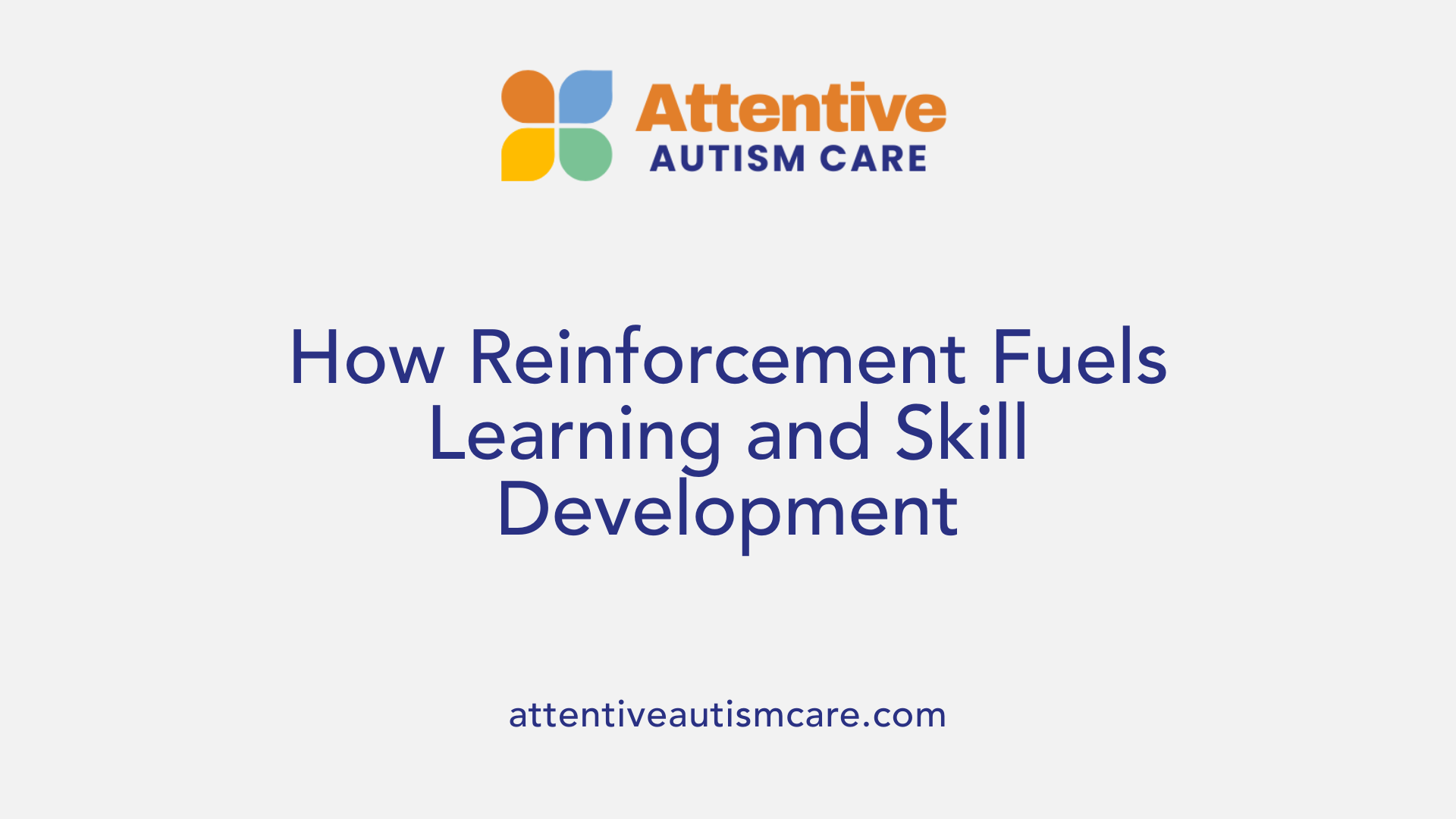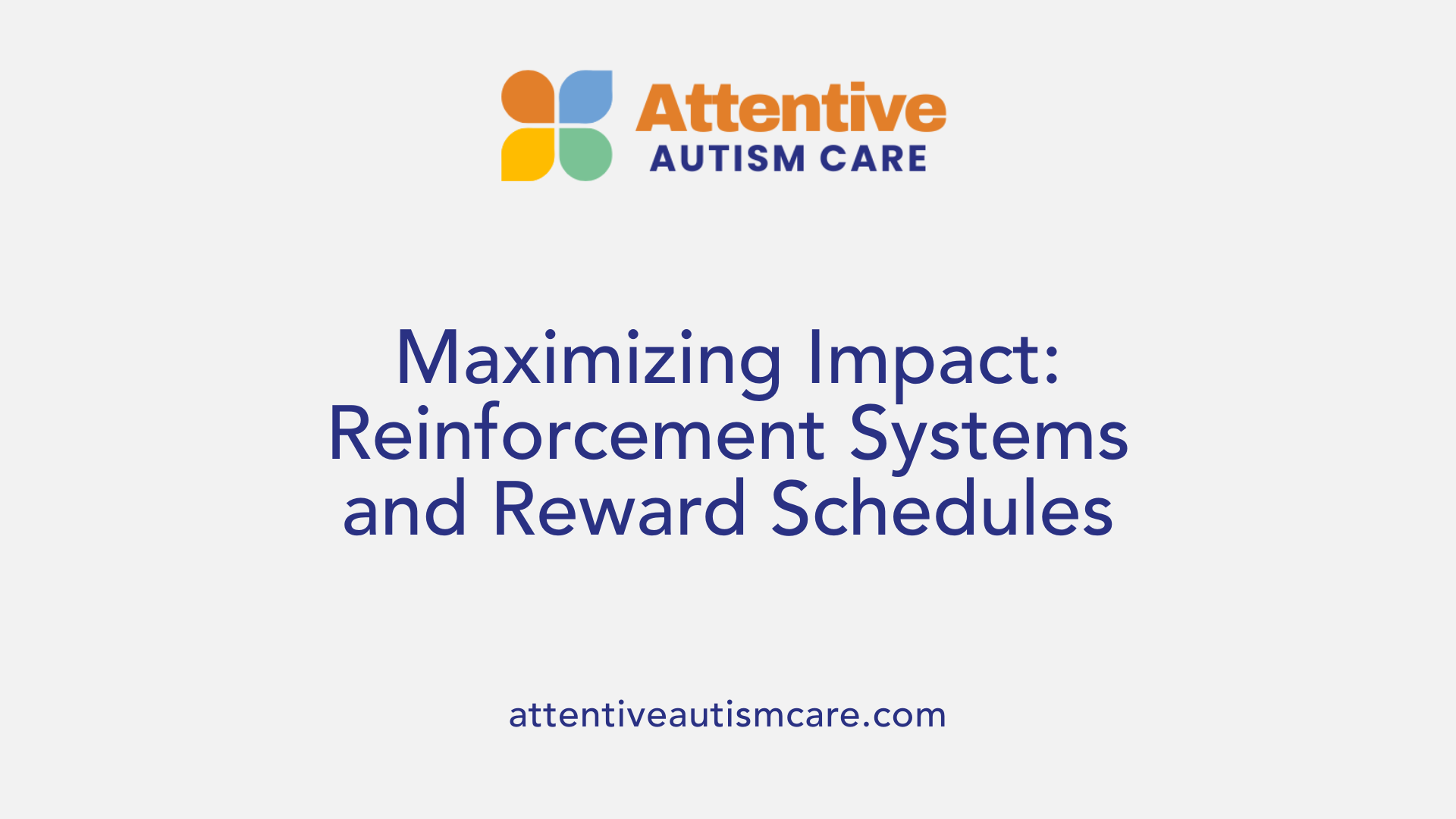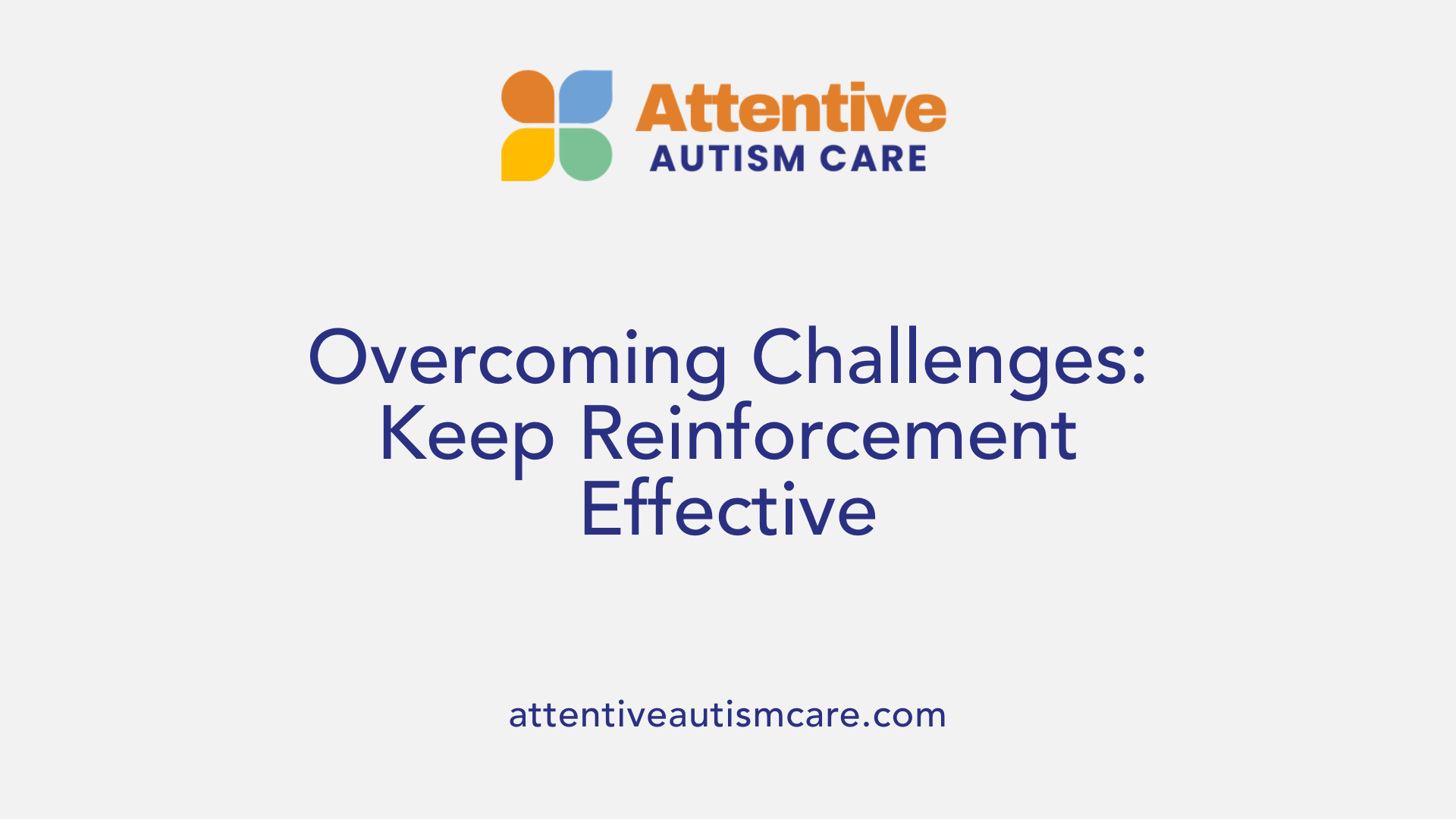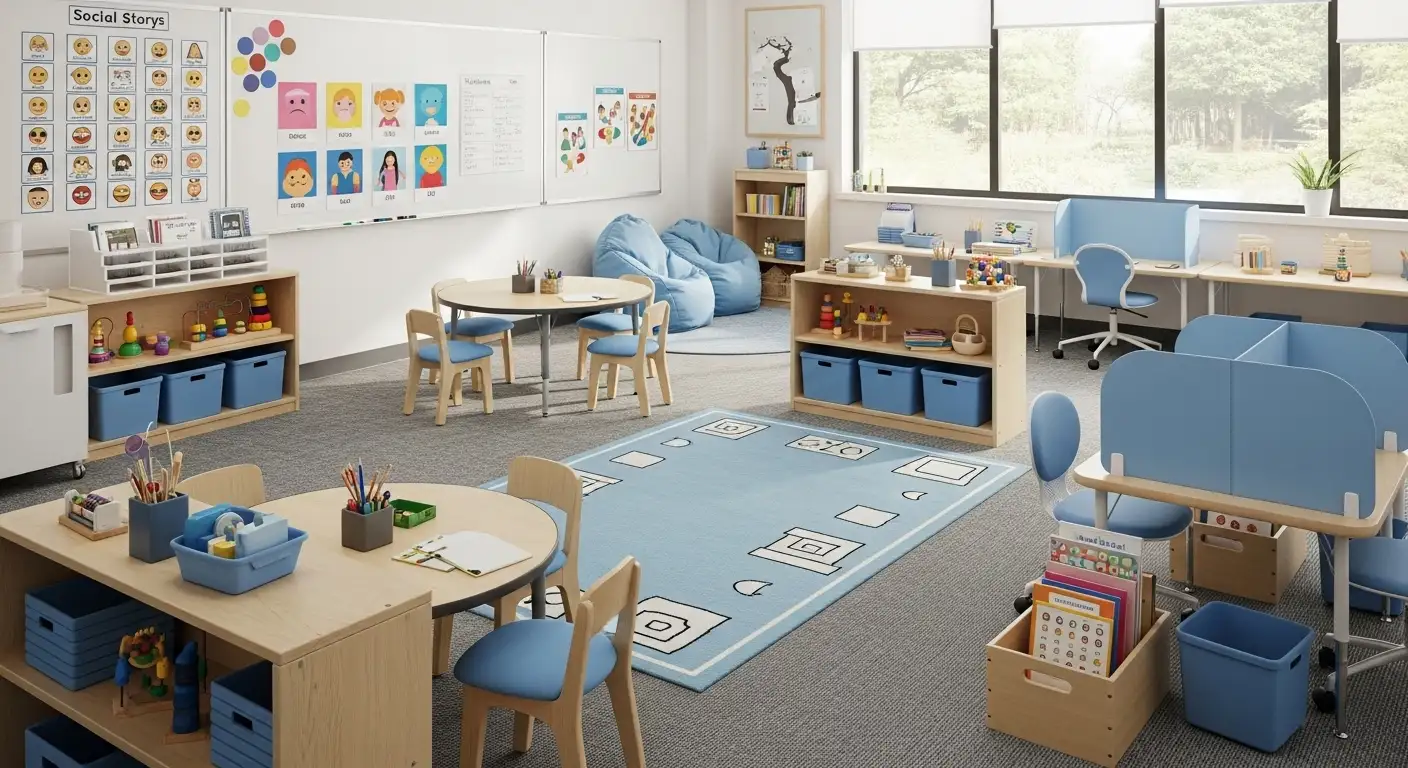How to Use Positive Reinforcement to Encourage Autism Learning
Harnessing Reward for Growth: Strategies to Foster Autism Learning

Understanding the Power of Positive Reinforcement in Autism Education
Positive reinforcement is a cornerstone of effective autism education, leveraging rewards to motivate and encourage desired behaviors. Grounded in evidence-based practices like Applied Behavior Analysis (ABA), this approach emphasizes the importance of well-timed, personalized rewards to support skill development, social interactions, and emotional regulation in children with autism. In this article, we explore how positive reinforcement can be effectively employed, strategies for implementation, and the scientific foundation underpinning this method.
Foundations and Scientific Basis of Positive Reinforcement in Autism

Principles of positive reinforcement
Positive reinforcement is a fundamental element of Applied Behavior Analysis (ABA) therapy, especially in working with children with autism spectrum disorder (ASD). It involves adding a rewarding stimulus immediately after a desired behavior occurs to increase the likelihood that the behavior will happen again. Rewards can include verbal praise, tangible items like toys or treats, engaging activities, or social approval.
The process is systematic and tailored to each child's preferences to maximize motivation. It starts with identifying specific target behaviors, then selecting appropriate reinforcers based on the child's interests. Reinforcement is delivered promptly following the behavior, which helps children associate their actions with positive outcomes.
A key aspect is the reinforcement schedule, often beginning with continuous reinforcement—rewards given every time the behavior occurs—and gradually shifting to intermittent reinforcement as the behavior becomes habitual. This method sustains motivation and maintains learned behaviors over time.
Evidence backing its effectiveness
Research supports positive reinforcement as an effective strategy in autism therapy. Meta-analyses of ABA treatments show significant improvements in communication, social skills, and reduction of problematic behaviors with moderate to large effect sizes. These findings underscore reinforcement's role in encouraging adaptive behaviors and skill acquisition.
Neuroimaging and physiological studies reveal that individuals with ASD often exhibit atypical responses to social and reward stimuli, such as reduced activity in brain regions involved in reward anticipation. Despite these differences, tailored reinforcement strategies are effective because they leverage individual preferences to strengthen neural pathways associated with learning.
Behavioral experiments have demonstrated that consistent use of reinforcement can enhance motivation, engagement, and skill retention in children with autism. The importance of individualized reinforcer selection is emphasized, ensuring that rewards are meaningful to each child for maximum impact.
Behavioral models used in autism therapy
Therapists employ models like the ABC (Antecedent-Behavior-Consequence) framework to analyze behaviors and plan interventions. This involves understanding what triggers behaviors (antecedents), the behavior itself, and the consequences that reinforce or discourage it.
Visual supports, cue cards, and clear instructions are used alongside reinforcement to improve understanding and engagement. Classroom programs like The Incredible Years’ Teacher Autism promote social and communication skills through visual schedules, structured environments, and shared activities.
In summary, grounded in scientific research and behavioral principles, positive reinforcement provides a reliable and ethical method for encouraging learning and adaptive behaviors in children with autism, contributing to their overall development and success.
How Reinforcement Strengthens Learning and Skill Acquisition

What techniques and strategies are recommended for applying positive reinforcement in autism education?
Implementing positive reinforcement effectively requires a tailored approach that aligns with each child's individual preferences. Common strategies include giving verbal praise, providing tangible rewards like snacks or small toys, and utilizing tokens such as stickers or points that can be exchanged for preferred items or activities.
Engaging activities that the child enjoys can serve as powerful reinforcers, making learning more motivating. It is also crucial to deliver reinforcement immediately after the desired behavior occurs, ensuring the connection between behavior and reward. Consistency is vital; reinforcement should be applied systematically and predictably to help children understand which behaviors are expected and rewarded.
Teachers and parents should observe and analyze the child's reactions to different rewards to identify what motivates them most. Over time, varying the types of reinforcement prevents it from losing its effectiveness and keeps the child engaged.
Overall, personalized reinforcement strategies—combining verbal praise, tangible objects, and engaging activities—are essential for encouraging positive behaviors and fostering skill development in children with autism.
Tailoring Reinforcement to Individual Preferences and Developmental Needs
How can parents and therapists effectively implement positive reinforcement techniques for children with autism?
Parents and therapists play a vital role in the success of positive reinforcement strategies. To harness their full potential, they should start by conducting reinforcer assessments, which involve observing and analyzing the child's reactions to various stimuli to identify what motivates them most.
Personalization of rewards is essential. Rewards should align with the child's interests and preferences, such as favorite toys, activities, verbal praise, or tangible items like stickers or tokens. This makes the reinforcement meaningful and increases the likelihood of behavior repetition.
Consistent application of reinforcement is crucial. Rewards should be delivered immediately after the desired behavior to strengthen the association between behavior and reward. This immediate feedback helps the child understand exactly which actions are being encouraged.
Reinforcement should be applied across various settings and by different caregivers to promote generalization, ensuring that behaviors are maintained in different environments.
Clear communication about what is being reinforced, using simple and concise language or cue cards, helps children understand expectations.
Setting specific, achievable goals guides the child's efforts and keeps them motivated. Incorporating reinforcement into daily routines or activities makes learning organic and less disruptive.
Gradually decreasing reliance on extrinsic rewards by introducing natural reinforcers, such as social interactions or personal accomplishments, supports sustainable behavioral change.
Regular monitoring of the child's progress allows for adjustments in both the type and schedule of reinforcement, ensuring strategies remain effective over time.
Conducting reinforcer assessments
Evaluating the child's preferences through observation or preference rankings helps identify effective reinforcers tailored to each individual.
Personalization of rewards
Rewards should vary to prevent boredom and should be periodically reassessed to match evolving interests.
Adjusting reinforcement schedules
Starting with continuous reinforcement—immediate reward for every instance of the desired behavior—and gradually shifting to intermittent schedules maintains motivation while encouraging independence.
In sum, an individualized and adaptable approach, combined with consistent implementation, forms the backbone of effective positive reinforcement for children with autism.
Incorporating Visual Supports and Clear Communication Methods

Use of visual schedules and cue cards
Visual schedules and cue cards play a crucial role in helping children with autism understand their daily routines and expectations. These supports break down tasks into manageable steps, reducing anxiety and promoting independence. For example, a visual schedule might depict a morning routine with pictures of brushing teeth, getting dressed, and having breakfast. Cue cards with simple words or images can serve as prompts during transitions or specific activities, providing clarity and reducing behavioral challenges.
Simplifying instructions
Using clear and concise language is essential when communicating with children with autism. Instructions should be straightforward, specific, and easy to understand. Incorporating visual cues alongside verbal instructions can enhance comprehension. For instance, instead of saying, "Please sit down," a teacher might show a picture of a child sitting in a chair while giving the verbal cue. This dual approach helps reinforce understanding and encourages compliance.
Enhancing understanding and engagement
To improve engagement, positive reinforcement is combined with visual supports and simplified instructions. Reward systems like tokens, stickers, or praise motivate children to participate and stay attentive. Incorporating preferred activities as reinforcers during learning sessions further enhances motivation. Additionally, using social stories and visual aids to explain social scenarios helps children grasp expected behaviors and emotional responses. Together, these methods create a supportive learning environment that fosters communication, reduces frustration, and encourages positive interactions.
| Supported Strategies | Description | Benefits |
|---|---|---|
| Visual schedules & cue cards | Visual tools to depict routines and prompts | Reduces anxiety, promotes independence |
| Simplified instructions | Clear, straightforward language and visuals | Improves understanding and compliance |
| Engagement & reinforcement | Use of rewards and visual aids to motivate | Enhances participation and learning |
These approaches align with evidence-based practices for autism intervention, emphasizing the importance of visual supports and effective communication to foster skills development and reduce problematic behaviors.
Using Reinforcement Systems and Reward Schedules Effectively

What are some common examples of positive reinforcement for children with autism?
Children with autism respond well to a variety of reinforcement strategies that motivate learning and adaptive behaviors. Social praise, such as saying "Good job!" or giving a smile, is simple but effective in boosting a child's confidence and encouraging them to repeat desirable actions.
Tangible rewards are also widely used. These can include stickers, small treats, or favorite toys, which serve as immediate positive feedback for specific behaviors. Such rewards help children make clear associations between their actions and positive outcomes.
Preferred activities or access to selected games or toys can be powerful reinforcers. When a child demonstrates a targeted behavior, granting them the opportunity to engage with these preferred items reinforces the behavior.
Token systems, like sticker charts or point systems, are common. Children earn tokens for completing tasks or exhibiting desired behaviors and can exchange them for larger rewards or privileges, providing motivation over longer periods.
Natural reinforcement—almost naturally occurring benefits, like social acceptance or personal pride—also plays a crucial role. As children develop new skills and experience success, the positive feelings and social recognition they receive further reinforce continued progress.
How can reward systems improve behavioral outcomes?
Reward systems tailored to individual preferences increase motivation, improve learning, and encourage sustained behavioral improvements. When reinforcers are meaningful and immediately follow the desired behavior, children are more likely to repeat that behavior.
Using consistent reinforcement and gradually fading reliance on tangible rewards helps foster intrinsic motivation and independence. Structured reward schedules, like variable intervals or ratios, can maintain interest and prevent habituation.
Reward systems, especially when integrated into daily routines, also promote social interactions, communication, and emotional regulation. Children learn to associate specific behaviors with positive outcomes, which may generalize to other settings.
What are reward schedules, and how do they influence learning?
Reward schedules determine how often and under what circumstances reinforcements are delivered. The two main types are continuous schedules, where every correct behavior is rewarded, and intermittent schedules, where rewards are given unpredictably or after certain numbers of behaviors.
Starting with continuous reinforcement helps establish desired behaviors quickly. Over time, shifting to intermittent schedules—such as rewarding every third response—maintains behaviors and fosters resilience when reinforcements are less frequent.
Gradually increasing the interval between reinforcements encourages independent behavior, reduces dependence on rewards, and promotes long-term skill acquisition.
How are token economies used in autism education?
Token economies are structured reinforcement systems where children earn tokens, like stickers or points, for displaying target behaviors. These tokens can be exchanged later for preferred items, activities, or privileges, providing a clear and motivating incentive.
This system allows for immediate reinforcement—tokens are earned right after the desired behavior—and delayed reinforcement—exchanging tokens happens later. Token economies help children understand the connection between effort and reward.
They are particularly effective for teaching social skills, increasing compliance, and reducing problematic behaviors. When well-implemented, token systems can provide consistency and clarity, making expectations transparent.
Reinforcement strategies summary:
| Reinforcement Type | Examples | Purpose | Additional Notes |
|---|---|---|---|
| Social Praise | "Good job!" | Increase social behaviors | Should be specific and sincere |
| Tangible Rewards | Stickers, treats | Reinforce specific behaviors | Should be varied and meaningful |
| Preferred Activities | Extra playtime | Promote engagement | Use as a reward for task completion |
| Token Economies | Stickers or points exchangeable for rewards | Establish clear motivation | Effective for complex behaviors |
| Natural Reinforcers | Personal pride, social acceptance | Encourage independence | Reinforces naturally occurring positive outcomes |
Both the timing and the personalized nature of reinforcers are crucial for success. Keeping a variety of reward options helps maintain their effectiveness, while consistent application ensures learning stability.
Addressing Challenges and Maintaining Effectiveness of Reinforcement Strategies

What are some strategies to troubleshoot and improve the effectiveness of positive reinforcement in autism therapy?
Ensuring positive reinforcement remains effective over time can be challenging due to habituation and variability in responses. To troubleshoot and enhance its effectiveness, practitioners and parents should prioritize personalized and meaningful rewards for each child. Regularly updating these preferences as they change keeps reinforcement motivating.
Immediate delivery of rewards is crucial, as it strengthens the connection between the behavior and the reinforcement. Only providing rewards contingent on specific behaviors helps the child understand exactly what action is being encouraged.
Incorporating a mix of reward types — such as verbal praise, tangible items, or engaging activities — prevents boredom and maintains interest. Visual supports, like pictures or video models, can clarify expectations and aid in teaching new skills. These tools also help children anticipate what is expected, reducing frustration.
Adjusting the environment to set children up for success is vital. Creating structured routines, offering choices, and providing appropriate breaks diminish irritability and increase compliance.
Monitoring progress regularly allows caregivers and therapists to determine if reinforcement is working or needs modification. Flexibility in adjusting reward types, frequency, and timing ensures that reinforcement continues to be effective and supports ongoing development.
In summary, combining personalization, immediacy, variety, visual supports, environmental adjustments, and ongoing assessment helps overcome common issues like habituation and response variability, maintaining the potency of reinforcement strategies in autism therapy.
Conclusion: Making Reinforcement Work for Every Child
Continuous assessment and adjustment
To optimize the effectiveness of positive reinforcement, it is essential to regularly evaluate and adjust reinforcement strategies. This involves observing how a child responds to different rewards, noting changes in motivation, and modifying reinforcers accordingly. Over time, preferences may shift, requiring updates to reward systems to maintain engagement and promote behavioral progress.
Environmental considerations
Creating a supportive environment enhances reinforcement strategies. Consistency across settings—home, school, and therapy environments—is crucial for reinforcing desired behaviors. Using visual supports, cues, and a structured routine can help children understand expectations clearly, reducing anxiety and encouraging success. Limiting access to reinforcers at home and maintaining a positive, predictable atmosphere also reinforce learning.
Long-term benefits
Consistent use of positive reinforcement fosters long-term behavioral improvements, including better communication, social skills, and self-regulation. When reinforcement strategies are tailored to individual preferences and delivered promptly, children develop self-discipline, personal responsibility, and confidence. These skills not only support immediate learning goals but also contribute to their overall well-being and success in social and educational settings.
Implementing Positive Reinforcement for Lasting Change
Successfully using positive reinforcement to encourage autism learning requires diligent assessment, personalized approaches, and consistent application. By selecting motivating rewards, adjusting reinforcement schedules, and employing visual supports, parents and therapists can foster a positive learning environment that motivates children with autism to acquire new skills and improve their behaviors. The evidence underscores that reinforcement strategies not only support immediate skill development but also promote enduring habits and independence, ultimately enhancing quality of life for children with autism and their families.
References
- Positive Reinforcement Autism - Golden Care Therapy
- Effective Classroom Strategies for Teaching Students with Autism
- Why is Positive Reinforcement so Effective - Circle Care Services
- Positive Reinforcement in ABA Therapy for Autism
- What are positive reinforcement ideas to use with children with ...
- What to do When Positive Reinforcement Isn't Working - May Institute
- Reinforcement Learning in Autism Spectrum Disorder - PMC
- Finding Reinforcers - Lighthouse Autism Center




































































































